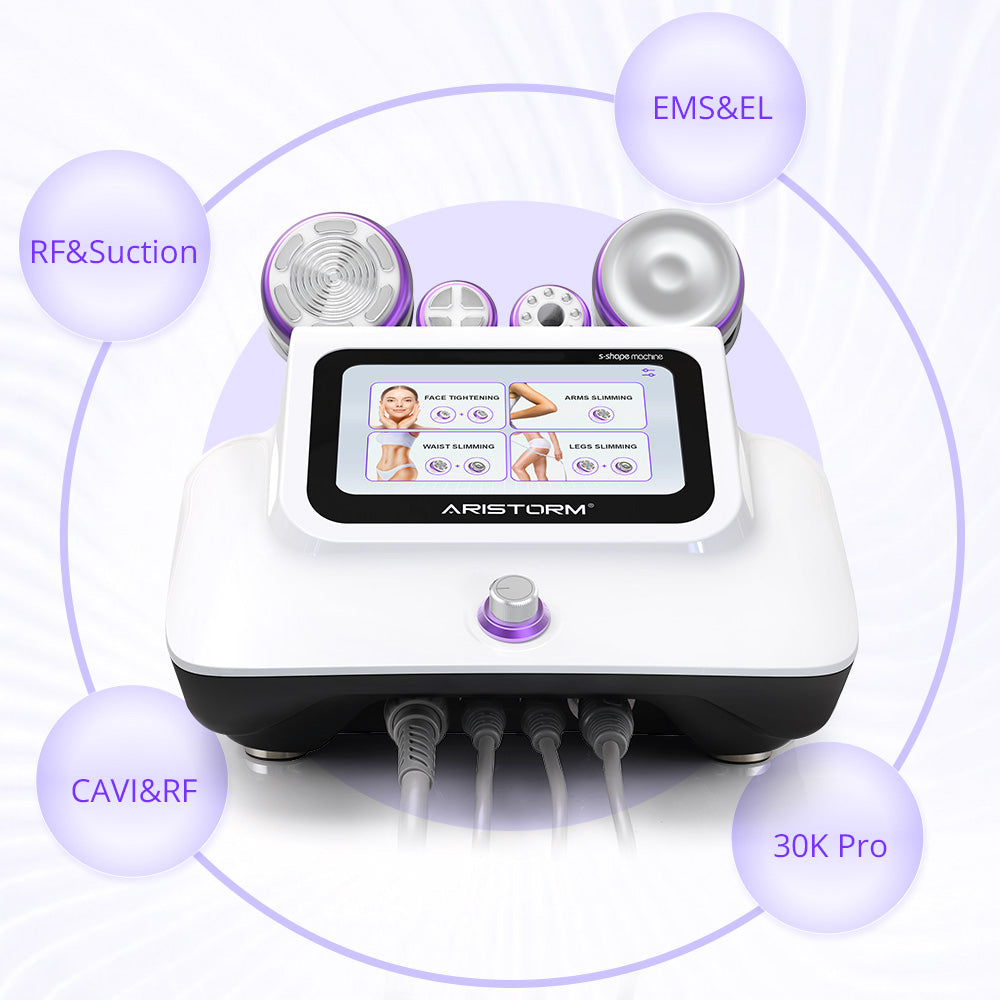What Are The Physiological Effects Of Ultracavitation?
Overview
- What is ultracavitation?
- How does ultracavitation work?
- What are the physiological effects of ultracavitation?
- FAQs
Summer is around the corner, but flab and excessive fat can be easily noticed on your body. How can you put on the summer clothes you cherry-pick in a shopping mall over the weekend? You're bothered and frustrated at a time. All of a sudden, dieting and workouts go through your mind. But they are not working for your concern. And traditional weight reduction methods make our bodies enter a conservation mode that may put a brake on the lymphatic system and metabolism.
Fortunately, advances in science and technology have paved the way for those pursuing beauty. Losing and controlling weight relies not only on exercising and being on a diet. Now, we have ultrasonic cavitation technology at our back. The popularity of this technique grows over time. It's proven as effective and efficient as some invasive or surgical procedures in removing fat. Are you touched? This article will shed some light on ultrasonic cavitation.
What is ultracavitation?
Ultracavitation is a non-invasive and painless procedure to remove localized fat from a specific body part. It utilizes ultrasonic waves to break down fat cells under the skin, posing no threat to or negatively affecting surrounding cells or organs. The destroyed fat cells will be naturally discharged through the lymphatic and urine system.

How does ultracavitation work?
An ultracavitation handpiece uses a transducer to produce sound waves, which penetrate skin directly and arrive at the subcutaneous fat layer. When the sound waves enter the body, it triggers strikes and frictions among fat cells, consuming energy and intracellular moisture, destroying, breaking, and blasting fat cells, and turning them into cell debris and free fatty acids. The cell debris is then swallowed, and the free fatty acids are metabolized via the lymphatic system. Repeating the process over and over can decrease the number of fat cells and achieve weight loss.

What are the physiological effects of ultracavitation?
Why should we prefer ultracavitation over other choices? What can it offer us? The procedure presents tangible and measurable outcomes. First, it can make your skin smooth and tightened. The process lessens the number of fat cells by burning fat deposition under the skin, making the skin compact and firm. Second, it reduces your waistline. Through the same principle, the waist size is lessened once the fat cells are decreased. Third, it removes deep-seated fat. It's known that some kind of fat, such as cellulite, is hard to be removed even if you live a healthy lifestyle. The procedure utilizes ultrasonic waves to penetrate the adipose layer to liquefy the cellulite. In short, you can experience 1 to 2 inches of fat loss after a session. And you can expect at best 2 inches of fat loss for every follow-up treatment. Why don't we select it with the physiological effects mentioned above?

FAQs
Q: What are the advantages of ultracavitation?
A: The procedure has several advantages. First, it's effective and time-saving. It's time-consuming for exercise and dieting to deliver effect. However, ultrasonic cavitation treatment begins to show its result after several sessions. Second, it's painless. Unlike surgical procedures like liposuction, ultracavitation is free from pain. Generally speaking, the method is non-invasive and painless. Third, it's risk-free. Most people take it as a low-risk treatment. Since it's not an operation, it involves no anesthesia, leaves no scars, causes no bleeding or risk of infection, and requires no downtime for the follow-up rehabilitation.
Q: What are the side effects?
A: After treatment, some people may experience slight side effects, which is a normal phenomenon and will fade away in a few days. The most common side effects are redness, blood stasis, and swelling. Some may experience drumming in the ears because the waveband has beyond the range of the sound wave that a human can detect. Since our bodies will release toxins and wastes, we possibly have more urine after therapy. Furthermore, your skin may get dry, which will last a few days. You can apply aloe-containing lotion to the part to relieve it. Generally speaking, most people can return to regular work and life the next day after treatment.
Q: Who can not expose to ultracavitation?
A: If you belong to one of the following cases, please refrain from walking close to it. The cases are as follow:
Women in pregnancy, lactation, or menstruation;
With heart problems or implant a heart pacemaker;
With severe diseases, such as hypertension, diabetes, cancer, etc.;
With a kidney-related injury, disease, or trouble;
With a liver-related injury, illness, or issue;
With acute inflammation;
With trauma or bleeding;
Who implant medical plastic parts or metal objects inside the body;
With an abnormal immune system;
Who are numb or insensitive to hot;
Under the age of 18 or overage people.
Q: How long does it take to see the effect?
A: You can probably see minor changes immediately after completing a session. But it takes around three to six months to witness a more apparent outcome. As the saying goes, "Haste makes waste." During this period, your body will continue to heal and readjust to give full play to the power of the technology.
Q: How often can I take the treatment?
A: According to tests, it takes three days for the body to reduce fat and discharge toxins after a session. Therefore, it's better to have it every 3 to 5 days. And you're advised to take it at least 5 to 10 times to achieve the optimal effect.
Q: Which body parts can have access to it?
A: It works best on body parts with localized fat, including the abdomen, thigh, buttocks, and upper arms. But you can't use it on the head, neck, or other parts with skeletons.
Q: What are the matters needing attention before and after ultracavitation therapy?
A: Before a session, you should keep a sensible and healthy diet and drink at least 2 liters of water. And you're advised to continue to consume the same amount of water daily within three days after treatment because it helps accelerate the circulation of the digestive system. In addition, you should primarily eat low-fat and low-carbohydrate food and have less oily or high-calorie food. If possible, exercise regularly to reduce fat naturally through the body's filter system. Putting all these in place, you can attain the desired outcome.



Leave a comment